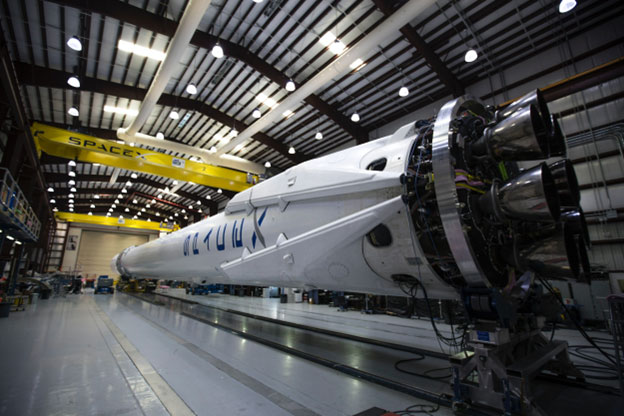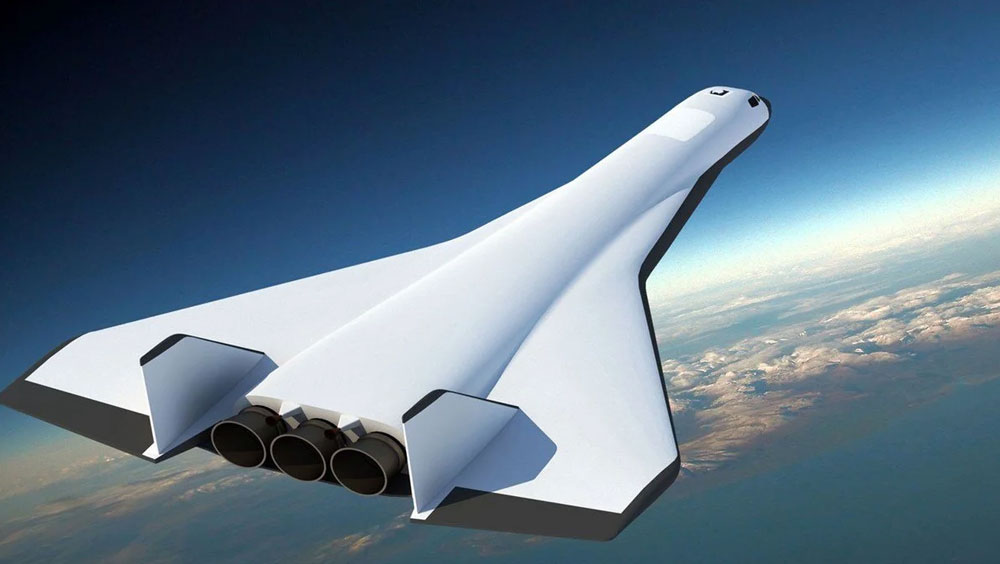As the world continues to grapple with complex geopolitical issues and regional security threats, investing in defense and aerospace is becoming an increasingly attractive option for investors. As governments around the globe look to bolster their forces and capabilities in order to defend against potential adversaries, the global security landscape is becoming more competitive than ever before.

With this comes an increased demand for sophisticated weapons systems, advanced technology, and specialized services within the defense and aerospace industries. Investors who take advantage of this trend now are likely to capitalize on strong returns in the future.
Global Security Trends and Market Overview
We are living in a world where geopolitical challenges are rapidly emerging, making it imperative for nations to strengthen their defense capabilities. As a result, defense spending continues to increase worldwide, creating significant market opportunities in the defense and aerospace industries.
Emerging Geopolitical Challenges
One of the emerging geopolitical challenges is the rise of North Korea as a nuclear power, leading to increased defense spending in the Asia-Pacific region. South Korea, for instance, has been ramping up its defense spending and recently announced plans to increase its defense budget by 7.4% in 2021. Additionally, countries such as Saudi Arabia, which is facing increasing threats from neighboring Iran, have been investing heavily in defense equipment.
Increasing Defense Spending Worldwide
The defense and aerospace industries provide an opportunity for companies to capitalize on these global security trends. The market for defense equipment, including fighter jets, missiles, and unmanned aerial vehicles, is projected to grow significantly in the coming years. Companies like Northrop Grumman, Lockheed Martin, BAE Systems, and Huntington Ingalls are all major players in the defense industry and have been investing heavily in research and development to stay ahead of the competition.
Market Opportunities in Defense and Aerospace
Moreover, advancements in technology have created new opportunities in the aerospace industry, with a particular focus on space exploration. The recent establishment of the National Space Council in the United States highlights the increasing importance of space activities, including commercial and economic endeavors, as well as initiatives related to national security. Companies like Pratt & Whitney and Northrop Grumman's subsidiaries, such as Adaptive Engines, are investing in the development of engines for both military and commercial space vehicles.
In conclusion, the current geopolitical climate and global security trends support the notion that defense and aerospace industries will continue to thrive. The opportunities within both industries are vast, with defense equipment and aerospace advancements being the major drivers behind a projected rise in revenue growth and annual growth rate. Companies that can capitalize on these trends have the potential to experience 3-5 year EPS growth, making it an attractive investment opportunity in the current market.
Subsectors in Defense and Aerospace
The defense and aerospace industries are vast and encompass a wide range of subsectors. Each subsector has its own unique set of challenges and opportunities, making it important for investors to understand the nuances of each industry.
One of the largest and most well-known subsectors of the defense industry is military vehicles and equipment. This includes everything from tanks and armored vehicles to helicopters and fighter jets. Companies like Lockheed Martin and BAE Systems are major players in this industry, with multi-billion dollar contracts to supply equipment to militaries around the world.
Another growing subsector is cybersecurity and intelligence. With the increase in online threats and cyberattacks, governments and militaries are investing heavily in cybersecurity measures. Companies like Northrop Grumman and Raytheon specialize in developing and implementing cybersecurity solutions and intelligence-gathering technologies.

Aerospace is another expansive industry that includes subsectors such as commercial aviation, unmanned aerial vehicles (UAVs), and space exploration. The commercial aviation industry is dominated by companies like Boeing and Airbus, which design and manufacture airplanes for airlines around the world.
UAVs, also known as drones, have become increasingly important in a variety of industries, including defense, agriculture, and infrastructure inspection. Companies like General Atomics and AeroVironment specialize in the production and development of UAVs for both military and civilian purposes.
Finally, the space industry has seen substantial growth in recent years, with the establishment of private space companies like SpaceX and Blue Origin challenging traditional government-run space agencies. This subsector includes everything from satellite production and space exploration to the emerging space tourism industry.
Investors interested in capitalizing on the opportunities presented by the defense and aerospace industries must understand the unique challenges and opportunities of each subsector. By doing so, they can make informed investment decisions that can potentially lead to significant returns.
Military Equipment Manufacturers
The military equipment industry is a vital part of the defense and aerospace sector, encompassing the production and supply of equipment ranging from tanks and armored vehicles to aircraft and ships. The industry is highly competitive and lucrative, with a global market outlook that is expected to continue its upward trajectory in the coming years.

Key Players and Market Performance
Key players in the military equipment industry include well-known companies such as Lockheed Martin, BAE Systems, and Northrop Grumman. These industry giants have multi-billion dollar contracts to supply militaries around the world with various types of equipment, including fighter jets, submarines, and missile defense systems.
Along with these established players, there are also emerging companies seeking to make their mark in the industry through innovative solutions and modern technology. One such company is Boston Dynamics, which is developing advanced robotics for military applications.
Technological Advancements and Future Outlook
The military equipment industry has seen significant technological advancements, including the use of artificial intelligence and 3D printing to enhance production processes and improve the functionality of the equipment. Data analytics and machine learning are also being incorporated for strategic decision-making and forecasting.
The future outlook for the military equipment industry is promising, with global defense spending projected to continue growing. The focus on research and development of new equipment coupled with technological advancements means that the industry is poised for continued growth and innovation.
Aerospace Companies
The aerospace industry is a complex and diverse sector that includes companies involved in the design, manufacture, and maintenance of aircraft, spacecraft, and related parts and technologies. This industry is divided into two main segments: commercial aerospace and defense aerospace.
Commercial and Defense Aerospace Distinctions
Commercial aerospace focuses on the development and production of commercial aircraft such as passenger jets and regional aircraft. Companies such as Airbus and Boeing are key players in this segment, commanding a significant portion of the market share. These companies also provide maintenance and support services for their products throughout their lifecycle.
Defense aerospace, on the other hand, is concerned with the production of military aircraft, drones, and other defense-related technologies. Key players in this segment include Lockheed Martin and Northrop Grumman, who secure multi-billion dollar contracts to supply military equipment and services.
Growth Factors and Investment Considerations
One major factor driving growth in the aerospace industry is the increasing demand for air travel, particularly in emerging markets such as China and India. This has resulted in the need for new and advanced aircraft, spurring competition among commercial aerospace companies to develop more fuel-efficient and environmentally sustainable planes.
In the defense segment, the rising global security concerns have led to increased defense spending by governments, resulting in a growing market for military aircraft and related technologies. The development of advanced drones and unmanned aerial vehicles (UAVs) has also opened up new opportunities for defense aerospace companies.
Investing in the aerospace industry requires careful consideration, as it is a highly competitive sector with significant capital requirements and regulatory hurdles. Investors should consider the financial strength and track record of companies, as well as their research and development efforts and ability to innovate. Additionally, geopolitical factors and defense budget allocations can heavily impact the performance of the industry.
Overall, the aerospace industry presents both challenges and opportunities for investors looking to capitalize on global trends in air travel and defense spending. It is a constantly evolving sector that requires a long-term investment strategy and knowledge of the industry's nuances and dynamics.
Cybersecurity and Information Technology
The increasing reliance on technology in our daily lives has led to a rise in cyber threats and attacks, making cybersecurity more critical than ever. Cybersecurity refers to the measures taken to protect computer systems, networks, and sensitive information from unauthorized access, theft, and damage.
Importance of Cybersecurity in the Modern World
In the modern world, where businesses increasingly rely on digital infrastructure, a successful cyber attack can result in significant financial and reputational damage. Therefore, cybersecurity has become a top priority across various industries, including finance, healthcare, and government organizations.
Key Players in the Cybersecurity Sector
Key players in the cybersecurity sector include companies such as Cisco, Symantec, and Palo Alto Networks, which provide a range of services such as firewalls, intrusion detection systems, and encryption technologies. These companies have experienced significant growth in recent years as businesses look to strengthen their cyber defenses.
Investment Opportunities and Future Trends
Investment opportunities in the cybersecurity sector continue to grow, as the demand for cybersecurity services increases. Venture capital firms and private equity investors are increasingly investing in startups that offer innovative cybersecurity solutions. Additionally, established companies are looking to acquire smaller firms to add cybersecurity capabilities to their portfolios.
Future trends in cybersecurity include the use of artificial intelligence and machine learning to automate threat detection and response. Additionally, the growing adoption of the Internet of Things (IoT) is expected to create new vulnerabilities that will require innovative cybersecurity solutions.
Cybersecurity is a critical aspect of information technology and is becoming increasingly important as we continue to rely on technology in our day-to-day lives. Investing in the cybersecurity sector requires careful consideration of the financial strength and track record of companies, as well as their ability to innovate and keep up with evolving threats. The future of cybersecurity is exciting, with new technologies and trends emerging to help protect our digital infrastructure.
Investment Strategies in Defense and Aerospace
Long-Term Growth Potential
Investing in defense and aerospace can offer long-term growth potential for investors. With global security threats on the rise, governments around the world are increasing their defense spending to address these challenges. As a result, defense industries are experiencing steady revenue growth and a positive industry outlook.
Diversification and Risk Management
Diversification and risk management are important factors to consider when investing in defense and aerospace. Building a portfolio that includes a mix of large, well-established companies and smaller, innovative firms can help spread risk and maximize returns. Additionally, investing in a diversified portfolio of defense companies across various sectors such as cybersecurity, military equipment, and aerospace can offer protection against industry-specific risks.
Research and Due Diligence
Research and due diligence are crucial when investing in defense and aerospace. Investors should consider factors such as a company's financial health, revenue growth, and market share. It is also important to consider a company's competitive advantage and its ability to innovate within a rapidly changing industry.
Considering Government Contracts and Policies
Another important consideration for investing in defense and aerospace is the impact of government contracts and policies. Government spending on defense and aerospace can significantly impact the industry's growth and revenue. Investors should stay informed about government contracts and policies that affect the industry, as they can create opportunities for upside potential.
Expected Growth Statistics in Defense and Aerospace
The global defense and aerospace industry is expected to experience significant growth in the coming years. According to projections by MarketResearch, the sector is expected to grow at a Compound Annual Growth Rate (CAGR) of 4.6% from 2020 to 2027, reaching a total market size of $1.72 trillion by the end of the period. Additionally, demand for military equipment and services is expected to increase, with defense spending projected to reach $1.78 trillion by 2027.
Benefits of Early Investing and Planning Ahead
The benefits of early investing and planning ahead in defense and aerospace are numerous. For starters, investors can take advantage of the long-term growth potential provided by the sector and benefit from the rising demand for military equipment and services. Additionally, early investments will enable investors to diversify their portfolios and reduce risk by investing in a mix of large, well-established companies as well as smaller, innovative firms. Furthermore, investors can take advantage of government contracts and policies that can create opportunities for upside potential.

Conclusion: Seizing Opportunities in Defense and Aerospace Investing
In conclusion, investing in defense and aerospace can be a smart decision for those seeking to capitalize on global security trends. While there are risks associated with any investment, diversifying a portfolio with a mix of established and innovative companies across various sectors in defense and aerospace can help mitigate those risks and potentially maximize returns.
Conducting thorough research and due diligence is crucial, as investors should analyze a company's financial health, historical revenue growth, market share, competitive advantage, and ability to innovate. Keeping informed about government contracts and policies affecting the industry is also key, as they can create opportunities for growth.
While the defense and aerospace industry has faced challenges in recent years due to budget cuts and changing priorities, there are still opportunities to be found. As the world becomes more interconnected, the need for cybersecurity solutions and aerospace technology continues to grow. Additionally, tensions between nations and geopolitical instability can result in increased defense spending.
Investors interested in defense and aerospace companies can choose from a wide range of options, including large heavyweights like Northrop Grumman and Lockheed Martin, or newer startups like Adaptive Engines. Exchange-traded funds (ETFs) focused on the aerospace and defense industry are also available, such as the S&P Aerospace & Defense select industry index fund.
In summary, investing in the aerospace and defense market can be a way to capitalize on a growing global market, but it requires careful consideration and analysis. By diversifying a portfolio, performing due diligence, and staying informed about industry trends and government contracts, investors can be well-positioned to seize opportunities in this dynamic and rapidly changing industry.
Frequently Asked Questions:
Frequently Asked Questions About Investing in Defense and Aerospace:
Is it a good time to invest in the defense and aerospace sectors?
Despite recent challenges facing the industry, it can still be a good time to invest in defense and aerospace. The need for cybersecurity and aerospace technology is growing as the world becomes more interconnected. Geopolitical instability and tensions between nations also tend to result in increased defense spending. Conducting thorough research and due diligence is crucial, as with any investment.
Moreover, there is a wide range of options to choose from, including large established companies as well as smaller, innovative firms. Exchange-traded funds (ETFs) focused on the aerospace and defense industry are also available for those looking for diversified exposure in this sector.
What are the main factors driving defense spending globally?
The main factors driving defense spending globally include geopolitical tensions, military modernization programs, and the need for cybersecurity solutions. While some regions may see a decline in defense spending in the short term, the long-term outlook for the industry appears positive due to the ongoing need for national security.
How can individual investors participate in the defense and aerospace market?
Individual investors can participate in the defense and aerospace market by investing in companies that operate in these sectors. Options range from well-established giants like Lockheed Martin and Northrop Grumman to innovative startups such as Adaptive Engines. Exchange-traded funds (ETFs) that focus on the aerospace and defense industry are also available for investors who prefer to diversify their investments.
Additionally, investors should conduct thorough research and due diligence to analyze a company's financial health, historical revenue growth, market share, competitive advantage, and ability to innovate. Keeping informed about government contracts and policies affecting the industry is also key, as they can create opportunities for growth.
What are the risks associated with investing in defense and aerospace?
As with any investment, there are risks associated with investing in the aerospace and defense sector. Defense contracts are often subject to government budget cuts and changes in priorities, which can affect a company's financial performance. Investors should also be aware of geopolitical tensions and the potential for conflict in regions where defense companies operate. There is also the potential for reputational damage and negative public perception, especially in the case of controversial weapons systems.
Are there any ethical considerations when investing in the defense industry?
Investing in the defense industry may present ethical considerations for some investors. While defense companies strive to provide national security and protect assets, their products and services may be involved in conflict. Investors should consider their personal values and beliefs and perform their due diligence before investing in any company. Some investors may prefer to invest in companies that prioritize sustainable practices and corporate social responsibility initiatives.


